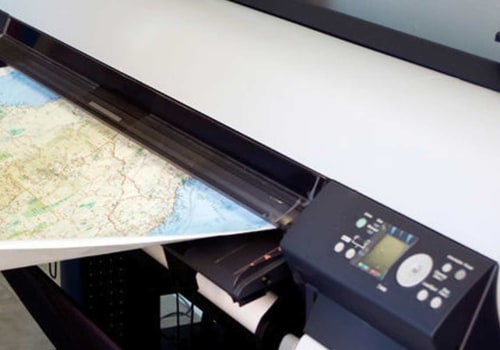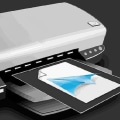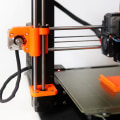Signage is an important part of many businesses, both indoors and outdoors. Whether it is used to direct customers to a store, advertise products and services, or simply provide information, signage is a powerful tool in getting your message out. But, with so many options available when it comes to indoor and outdoor signage, it can be difficult to decide which type of signage is best for your needs. This article will provide a comprehensive overview of indoor and outdoor signage, helping you to make an informed decision about the best way to communicate your message. We will cover the different materials used in signage, the advantages of indoor and outdoor signage, how to choose the right size, and the various types of signage available.
We will also look at how to design effective signage and tips on installation and maintenance. By the end of this article, you will have the knowledge and confidence to choose the right type of signage for your business.
Indoor and outdoor signage
is an important part of any business, organization, or event. It helps to create an identity and can be used to communicate important information to customers, guests, or employees. There are a variety of indoor and outdoor signage solutions available for businesses, organizations, and events.Each type of signage has its own advantages and disadvantages, so it is important to understand the different options before making a decision. Static signs, like billboards, are a popular choice for businesses looking to advertise in a visible way. They are typically made from durable materials and can be designed to stand out in the environment they are placed in. Additionally, they can be used to deliver messages to a wide audience at once. However, static signs tend to be more expensive than other options. Digital signs, like digital billboards, are becoming increasingly popular.
They offer businesses the ability to display dynamic content that can easily be updated. Digital signs also have the advantage of being able to capture more attention than static signs, as they are often bright and eye-catching. However, digital signs can be more expensive than static signs and may require additional maintenance. Custom signs, like vinyl banners, are a great way to create a unique look for any business or event. These signs can be customized with logos, colors, and other graphics that help to create a distinct identity.
Additionally, custom signs are relatively affordable and can be quickly produced in large quantities if needed. No matter which type of signage solution you choose, there are certain benefits that come with each option. Indoor and outdoor signage can increase visibility for your business or event. It can also be cost-effective as it is often much cheaper than traditional advertising methods. Additionally, signage solutions can provide flexibility as they can be easily moved or changed to accommodate different needs. When choosing the right type of signage for your needs, there are several factors to consider.
Consider the location where the sign will be placed and what message you want to communicate. Additionally, think about how long you plan on displaying the sign and what type of material would best suit your needs. Finally, consider the budget you have available when selecting a signage solution. By understanding the different types of indoor and outdoor signage solutions available and their benefits, you can make an informed decision about which one is right for your needs.
Whether you choose static, digital, or custom signs, these solutions can help make your business or event more visible and memorable.
Static Signs
Static signs are signs that do not change or move, and are typically used to convey a message in a fixed location. They are ideal for situations where the message needs to remain consistent, such as advertising a business or displaying directions. Static signs can be made from a variety of materials including metal, wood, plastic, and more. Metal signs are one of the most common materials used for static signs, as they are durable and weather-resistant.Wood is another popular choice, as it is aesthetically pleasing and can be painted, stained, or engraved. Plastic is also a popular option due to its affordability and ability to be printed in full color. Static signs have numerous benefits, including durability, visibility, and cost-effectiveness. They can be seen from a distance and will last for many years with minimal maintenance.
They are also very cost-effective compared to other forms of signage, and can be used to advertise businesses or provide directions in an economical way. Common examples of static signage include billboards, bus shelters, storefronts, road signs, and more. Billboards are one of the most popular static signs, as they can be seen from far distances and used to advertise products or services in an eye-catching way. Bus shelters are also commonly used for static signage, as they provide a sheltered area for passengers to wait for the bus and provide an opportunity for businesses to advertise their products or services. Storefronts often use static signage to display their hours of operation or products/services offered.
Finally, road signs are an important form of static signage that provides important information about local laws and regulations.
Digital Signs
Digital signs are a popular form of signage which utilizes digital displays, such as LEDs, LCDs, and projection systems, to communicate messages. Digital signs have several advantages over traditional forms of signage, such as greater flexibility, cost-effectiveness, and ease of use. LEDs are one of the most common types of digital signs. They are cost-effective and energy-efficient, making them well-suited for both indoor and outdoor applications.LCDs are also a popular type of digital signage, offering higher resolution and vibrant colors. Projection systems are best suited for large-scale applications, as they can be used to display images and videos on a large scale. Digital signs are highly versatile and can be used for a variety of applications, from displaying advertisements to providing directions or displaying messages to customers. Digital billboards are an increasingly popular form of digital signage, allowing for rotating content and customized messages.
Other common digital signs include digital menu boards, wayfinding signs, and kiosks. When choosing a digital sign solution, it is important to consider the environment in which it will be used, as well as the desired message. For example, indoor digital signage should be bright enough to be clearly visible in a variety of lighting conditions, while outdoor digital signage needs to be waterproof and able to withstand extreme temperatures. It is also important to consider the size and placement of the sign to ensure that it is visible and easy to read.
Custom Signs
Custom signs are a great way to get your message across in a unique and memorable way. They can be used both indoors and outdoors and come in a variety of shapes, sizes, and materials. Common materials used for custom signs include vinyl, fabric, foam board, and aluminum. Each of these materials has its own advantages and disadvantages, so it’s important to consider which material is best suited for your needs. Vinyl is one of the most popular materials used for custom signs.It is lightweight, durable, and easy to install. Vinyl is also highly customizable, allowing you to create any design you want. Vinyl banners are a great option for events, as they are easily transportable and can be hung from walls or posts. Fabric is another popular choice for custom signs. It is lightweight, yet strong, and can be used for both indoor and outdoor signage.
Fabric signs are also very customizable, allowing you to create any design you want. They are also easy to install and can be hung on walls or posts. Foam board is another popular choice for custom signs. Foam board signs are also highly customizable, allowing you to create any design you want. Foam board signs are also easy to install and can be hung on walls or posts. Aluminum is the most durable material used for custom signs.
Aluminum signs are highly customizable, allowing you to create any design you want. They are also very resistant to weathering and wear, making them ideal for outdoor use. Aluminum signs are also easy to install and can be hung on walls or posts. Custom signs are a great way to get your message across in a unique and memorable way. With the right materials and design, custom signs can help create an identity and communicate important information to customers, guests, or employees.
Consider which material is best suited for your needs when choosing the right custom sign solution.
Choosing the Right Signage Solution
When it comes to choosing the right signage solution for your needs, there are a number of factors that should be considered. These include budget, location, audience reach, visibility, durability, and flexibility. Each of these factors plays an important role in selecting the right signage option for your needs. Budget is one of the most important considerations when choosing a signage solution. Depending on your budget, you may opt for an inexpensive option such as vinyl banners or a more expensive option such as metal signs.Additionally, budget should factor in installation costs, which can vary depending on the type of sign chosen. The location of your signage is also an important consideration. Indoor signs are best suited for indoor locations such as lobbies or hallways, while outdoor signs are best suited for outdoor locations such as sidewalks or parking lots. It is important to choose a sign that is visible from the intended location and can withstand the elements if placed outdoors. The audience reach is another factor to consider when choosing a signage solution. If your goal is to reach a wide audience, you may want to consider a larger sign such as a billboard or banner.
Alternatively, if you are targeting a smaller audience, you may opt for a smaller sign such as an A-frame or window decal. Visibility is also an important factor to consider when choosing a signage solution. Signs should be placed in areas that have high visibility, such as busy intersections or near entrances. Additionally, signs should be large enough to be seen from a distance and should be clearly visible during daylight hours. Durability is another factor to consider when choosing a signage solution. If your sign will be placed outdoors, it should be able to withstand the elements without fading or becoming damaged.
Vinyl banners, metal signs, and A-frames are all durable options that can withstand the elements and have a long lifespan. Finally, flexibility is an important factor to consider when choosing a signage solution. Depending on your needs, you may want to opt for a sign that can be easily moved or changed as needed. A-frames and banners are both flexible options that can be moved or changed as needed. When selecting the right signage solution for your needs, it is important to consider budget, location, audience reach, visibility, durability, and flexibility. By taking these factors into account, you can ensure that your sign meets your needs and stands out from the competition. In conclusion, signage is an essential element for any business or event.
It can be used to create a unique identity, promote a product or service, and communicate important information. Indoor and outdoor signage solutions come in a variety of styles, sizes, and materials. Static signs are a great choice for permanent branding and promotion, while digital signs offer more flexibility and cost-effectiveness. Custom signs can also be designed to meet specific needs.
When selecting the right type of signage for a particular need or location, careful consideration should be given to ensure the best result. With the right solution in place, businesses can increase their visibility, cost-effectiveness, and flexibility.











Leave Message